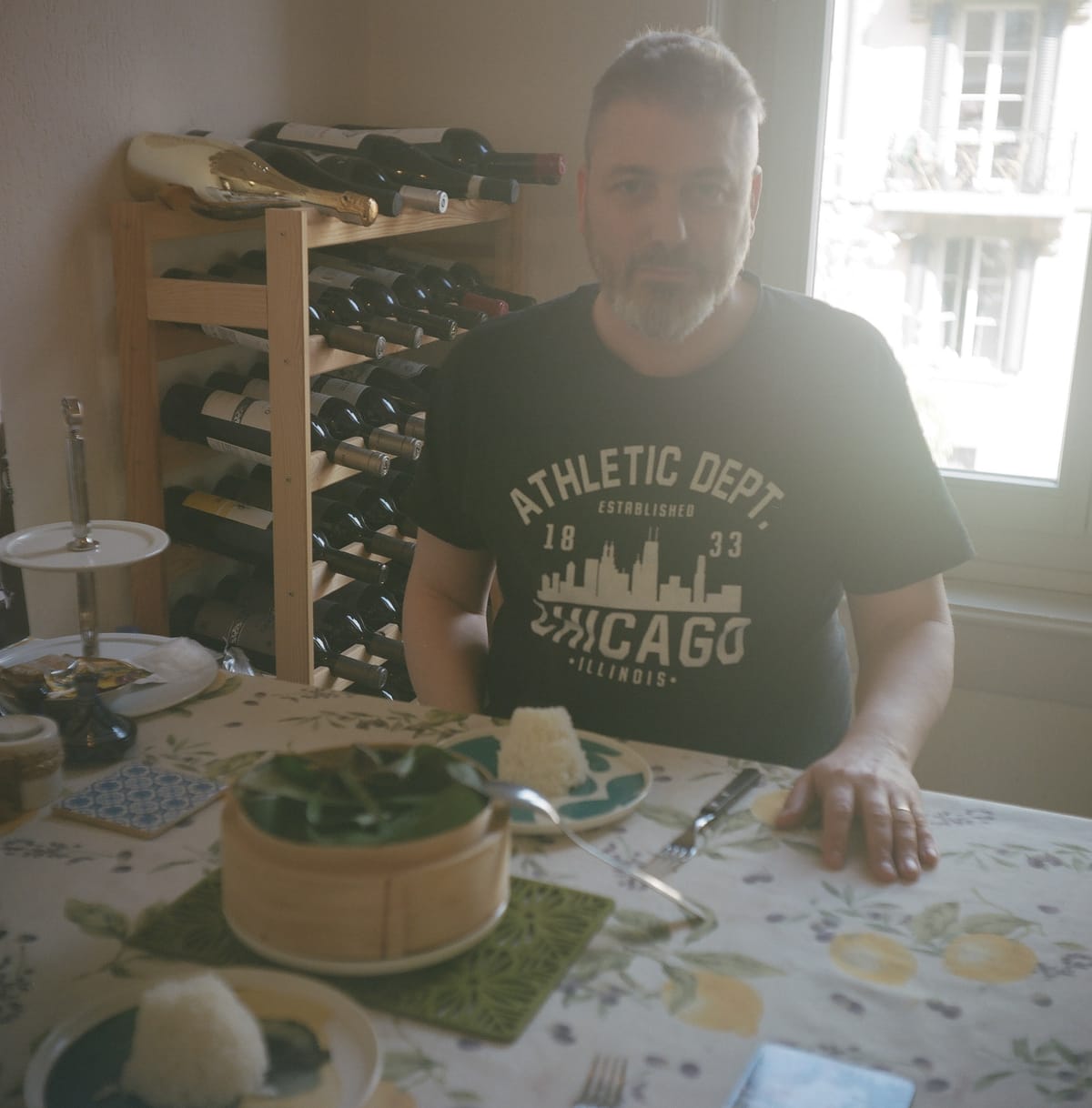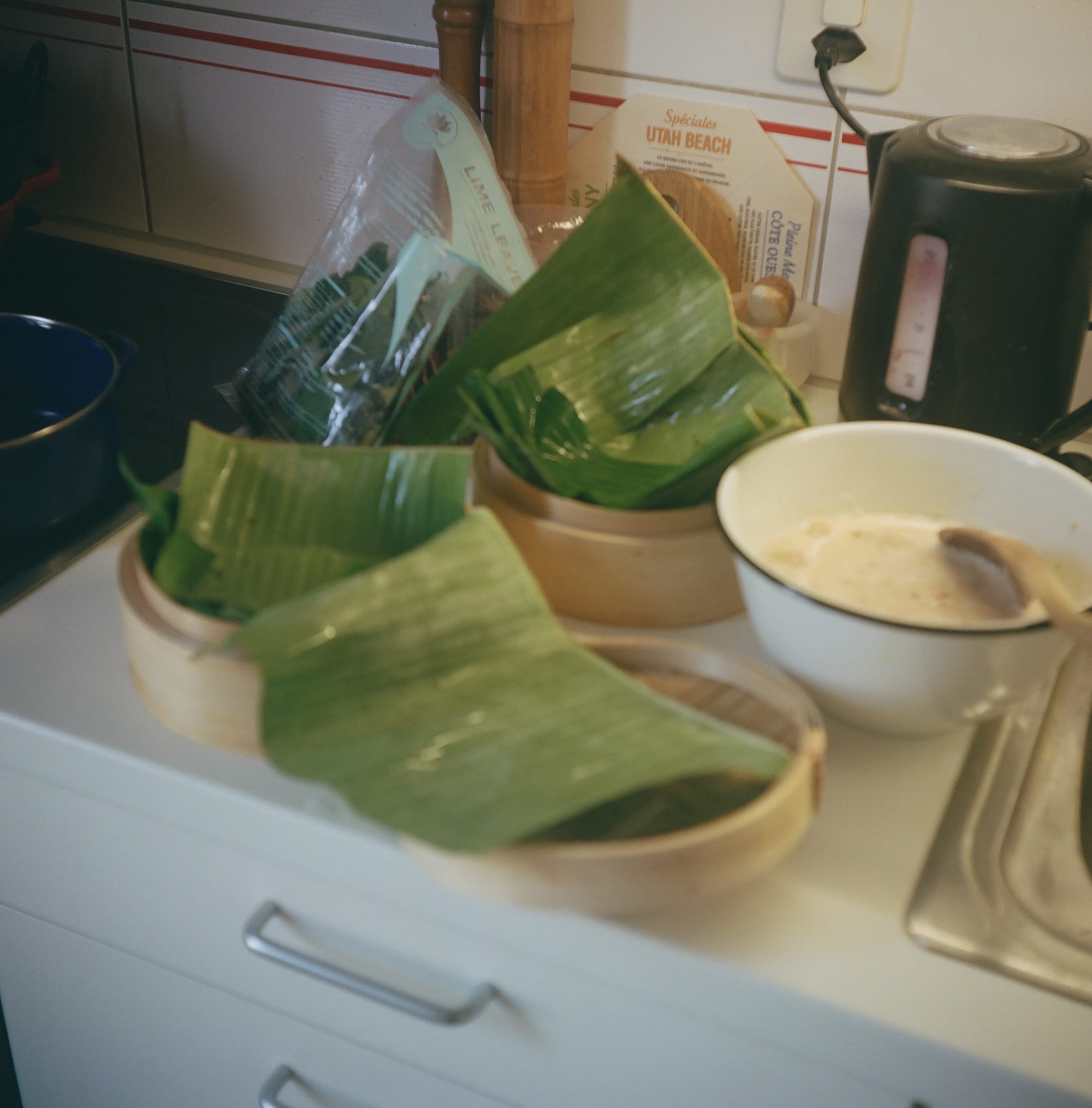What to eat CAMBODIA 🇰🇭 Amok trey
While Cambodians will point to royal tradition given the lengthy preparatory time for making amok trey, a steamed freshwater fish curry, the dish itself has also returned in various forms since the horrors of the 1970s... In modern day Cambodia, a fast-food version is also sold at street stalls.

Amok trey
Published April 19, 2024 · by Amanda Rivkin Häsler
Cambodians suffered greatly under the rule of the Khmer Rouge from 1975 until 1979, when 1.7 million perished at the hands of a bloody Maoist dictatorship hell bent on eradicating the country’s culture and elite. When a nation becomes an enemy of itself, the casualties run like rivers of blood and infect everything from the air to soil to history. What there once was can no longer be. What there is becomes a pale ghost or imitation of things past. The people can never again be as they once were.
While it is a ghastly place to begin a discussion on the origin story of Cambodia’s national dish, it is a necessary place. Like much else in Cambodia, it is necessary to acknowledge the rupture caused by the genocide in order to begin to rebuild and perhaps even heal someday.
Cambodia is an impoverished nation but one with an extraordinary past. The Khmer Empire ruled from the ninth to the fifteenth centuries and is at the root of the country’s national dish, according to oral tradition. While much of the written records and history were destroyed by the Khmer Rouge, it is thanks to the nation’s strong oral traditions that dishes such as amok trey and the history of their origins are shared today.
However, a word of caution is in order when it comes to reliance on oral traditions. A lack of available sources beyond folk tradition and oral custom is a real phenomenon plaguing the Cambodian nation on matters beyond the country’s vast culinary richness. Without written records, memory fades, history forgets. Stories change over time and victims and perpetrators alike bend the past to accommodate new or uncertain futures.
While Cambodians will point to royal tradition given the lengthy preparatory time for making amok trey, a steamed freshwater fish curry, the dish itself has also returned in various forms since the horrors of the 1970s. On the finer spectrum of things, it is associated with celebrations such as weddings and the country’s Water Festival, which marks the natural reversal of the waters of Tonle Sap River from southeast into the Mekong River during the monsoon season in October or November to the northwest and the Tonle Sap Lake. The festival itself is a way of honoring the Mekong River, for blessing Cambodia with fertile lands and rich stock of fish in its waters. Additionally, amok trey is also served to mark the Khmer New Year in April.
To make amok trey, a kroeung, or delectable paste of lemongrass, galanga, turmeric, and garlic as well as chili and lime are ground together in a pestle and mortar – or in a blender in modern times. This is used to both marinade the fish before a sauce of coconut milk, egg, palm sugar (substituted for date sugar in our version), and fish sauce coat the fish prior to steaming in fragrant banana leaves.
In Cambodia, there is a fair amount of debate around how much if any egg to add as well as which part of the egg, just the whites or the whole egg? As is befitting of any true national dish, every chef and every family has its preferences. In our version, we opt for egg white only. The goal is a soufflé-like texture and egg whites only seemed most befitting the demanding culinary challenge amok trey presents.
In addition to banana leaves, some places have been known to offer amok trey in a coconut shell. Substitutions are also made with the protein, with shrimp, chicken, beef, even tofu or snails supplanting the white fish. In modern day Cambodia, a fast-food version is also sold at street stalls. Amok trey is also popular in neighboring Thailand and Laos as well.
Recipe
Ingredients:
Banana leaves
500 grams white fish (I used cod and scallops, but use any fresh whitefish or freshwater fish you prefer)
250 ml of coconut milk
2 egg whites
1 tablespoon fish sauce
3 teaspoons date sugar
Lime leaves
Dried red chilis
For the kroeung (paste):
1 large shallot or 3 cloves of garlic, diced fine
100 grams of lemongrass (about 6 stalks)
2 tablespoons galangal
2 tablespoons turmeric
1 tablespoon shrimp paste
4 small red chilis

Step 1: Wash the banana leaves. Set aside.
Step 2: Prepare your kroeung (paste) in a bowl. Dice shallot or garlic cloves. Remove hard exterior of lemon grass before cutting off end at the base and slicing lengthwise. Dice the soft end until it becomes hard and little “hairs” appear on stalk. Chop as fine as possible (the remaining part of the stalks can be saved and refrigerated or frozen to use as aromatics in poultry cavities or soup later). Add two tablespoons of chopped galangal, turmeric, red chilis and shrimp paste. Smash together using a mortar and pestle or failing that, a food processor.
Step 3: Add several spoonfuls of the kroeung onto the fish and mix together until the two are combined and the fish is covered in the paste. The finer the fish, the smoother the consistency, the bigger the pieces, the chunkier the final amok trey will be.
Step 4: In a mixing bowl, combine coconut milk, egg whites, fish sauce, and date sugar. Whisk together. Add remaining kroeung and whisk some more.
Step 5: Prepare the banana leaves in bamboo steamers to support the mixture of fish combined with the liquid. Line the bamboo steamers with several layers of banana leaves. As it steams, it will harden slightly to the texture of soufflé, but not harder.
Step 6: Prepare water for the steamer.
Step 7: Combine fish and liquids, stir together. Gently pour into the banana leaf lined bamboo steamers. Cover with lime leaves and dried chilis before folding banana leave over the top and stacking bamboo steamers with lid over top bamboo steamer.
Step 8: Gently place over water in steam pot and allow to steam for 20-30 minutes, until combined fish and liquids has the consistency of soufflé. Serve with basmati rice.
Tips, tricks and notes:
For banana leaves in Switzerland, I had to order online from Dalchini, which bills itself as a “world food market” offering treats from Asia, Africa, the Anglo-world and Turkey that are often hard to find in even the ethnic groceries and specialty shops of Switzerland.
For galangal, turmeric, lemongrass and shrimp paste, the Thai section of Loeb Lebensmittel in Bern did the trick.
I found frozen lime leaves at the Akkara Asian Supermarket in the Lorraine district of Bern.
Learn where to eat Cambodian food in Switzerland.
Follow our social media pages @swissglobaldining on Instagram, TikTok and YouTube